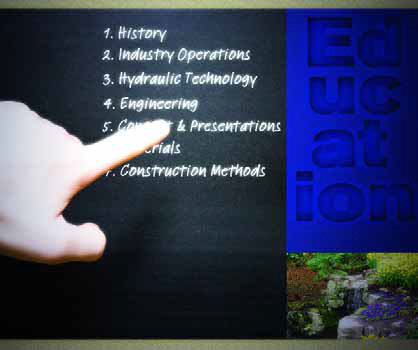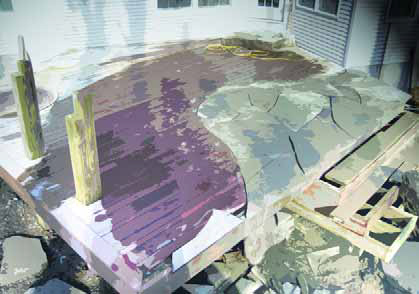column
As watershape designs have become more creative, more competitive and ultimately more valuable to our clients than they once were, it’s natural that we have started paying more attention to protecting our output – what some call our “intellectual property.” This is indeed a large and important issue for many people in our business, virtually to the point where watershapers are now facing the same sorts of concerns that have preoccupied architects and landscape architects for decades. And we’ve caught up with our colleagues at a bad time: With technology being what it is now, the opportunities for
Last month, we began describing our work on an indoor butterfly garden for the Strong Museum in Rochester, N.Y. – an extremely challenging design/build project that required us to work as part of a large team in developing a complex garden, pond and waterfall composition. While the resulting butterfly-oriented design was definitely unusual in form and execution, it was also highly unusual in the convoluted way our firm became involved and in the complexities of
I think we can all agree that design communication between architects, engineers, designers and contractors should be clear and concise. If that’s the case, it follows that plans and other construction documents should be uniform in their organization and layout – in other words, that they should follow a set of standards to which everyone in the design/construction community can and will adhere. Why the bother? The plain fact is that any given project involves a cast of characters that will be different – sometimes completely so – from just about any other project. This is why I’m such a strong advocate for
In the often wild and woolly world of custom landscape and watershape design, it’s sometimes impossible to predict the sources of the most interesting and challenging projects – or anticipate how we manage to find our ways into the middle of them. It’s all part of what makes this profession so uplifting at times – and so confounding at others. I’ve worked hard to accept and embrace the strange tides of fortune this business entails. As a case in point, this month (and next) I’m going to relate a story that captures the essence of what it can take to accommodate the unexpected and enlist the nerve it sometimes takes to
I’ve always believed that pessimism is useless. At times, I think it can even be destructive, which is why I personally beat the drum for positive thinking every chance I get. Sure, there are always going to be those who accuse optimists like me of seeing the world through rose-colored glasses, but I counter that by saying that I also believe that optimism is worthless if positive thoughts aren’t backed up by equally positive actions. That this is the foundation of my philosophy should be obvious to
It’s an unfortunate fact that landscape architects receive little or no formal education in watershaping while they’re in school. As a result, where the typical landscape architect’s irrigation plan will show every pipe, fitting, wire and component for a given project, that same project’s pool plan will carry almost no detail at all. This phenomenon begs the question: Why don’t our colleges and universities do more to educate landscape architects about watershaping? The answer to this question causes me double pain, because I know full well that
I’m sort of a curmudgeon when it comes to wood decks. They’ve been on the scene for a good 50 years now, and many of them are just fine – but I’ve spent an awful lot of time in my career loathing what I see and helping my clients remedy the short-sightedness of those who set them up in the first place. At times, I just wish everyone had stuck to stone. What really gets my goat are the uninspired linear expanses that poke aimlessly off the backs of houses. Residential developers often resort to
As we discussed last month, perimeter-overflow details are among the most distinctive and challenging of all features in today’s custom pool market. In March’s column, we defined the different types of these edge designs, then described the complex, exacting process of building a knife-edge overflow system. This time, we’ll get into the hydraulic finesse needed to make these systems work. This includes everything from calculating bather surges to sizing the plumbing and surge tanks needed to make these effects function
There’s truth to the notion that the only thing that’s permanent in human endeavors is change. For the past seven years, I’ve had the privilege of sharing with you scores of details, insights, opinions and descriptions of the watershaping process, always hoping that, through words and images, I might influence the way some of you approach your work. It’s been a pleasure throughout, but the time has come for me to change things up, step aside and let other






















Celebrating the Moment